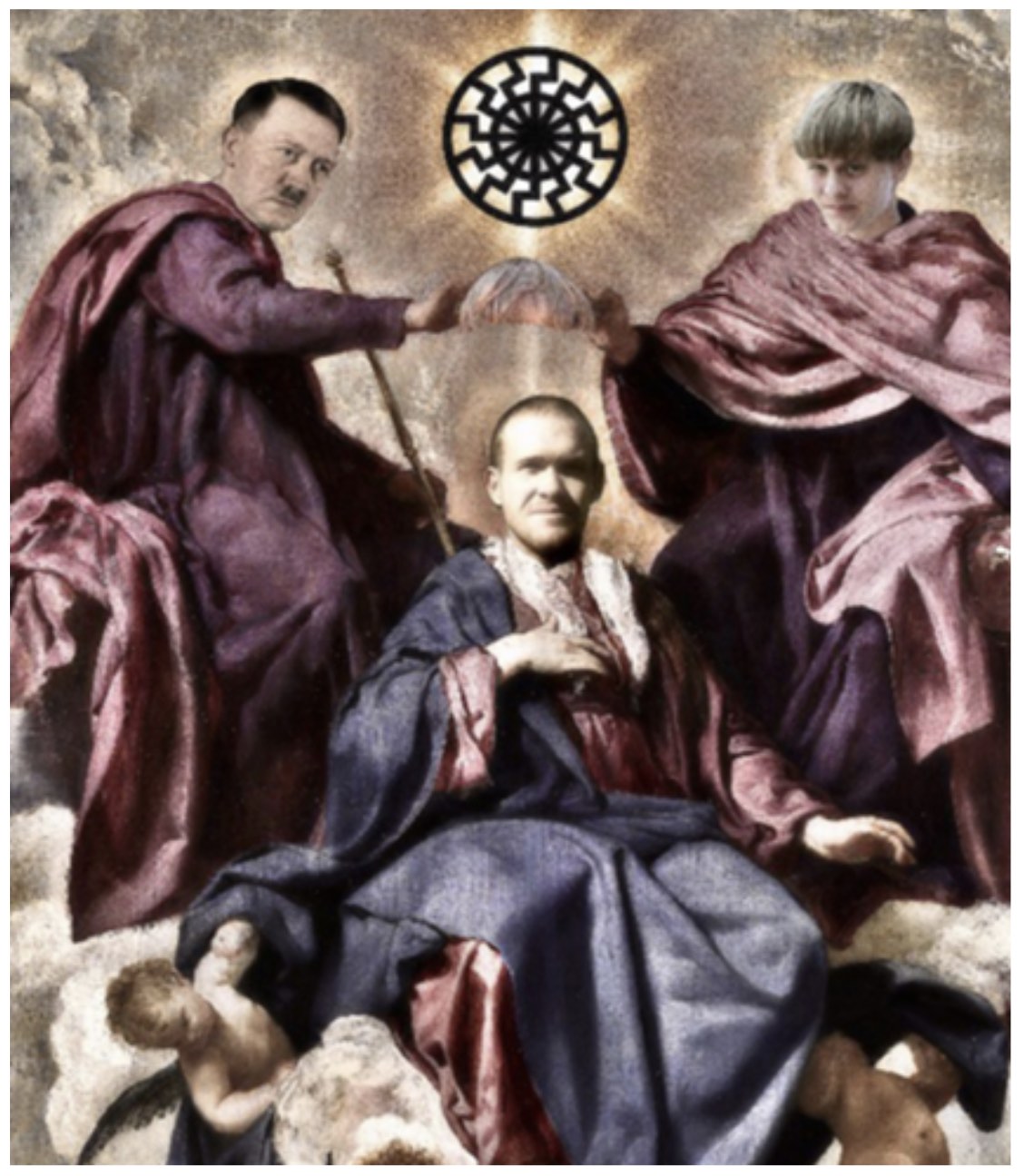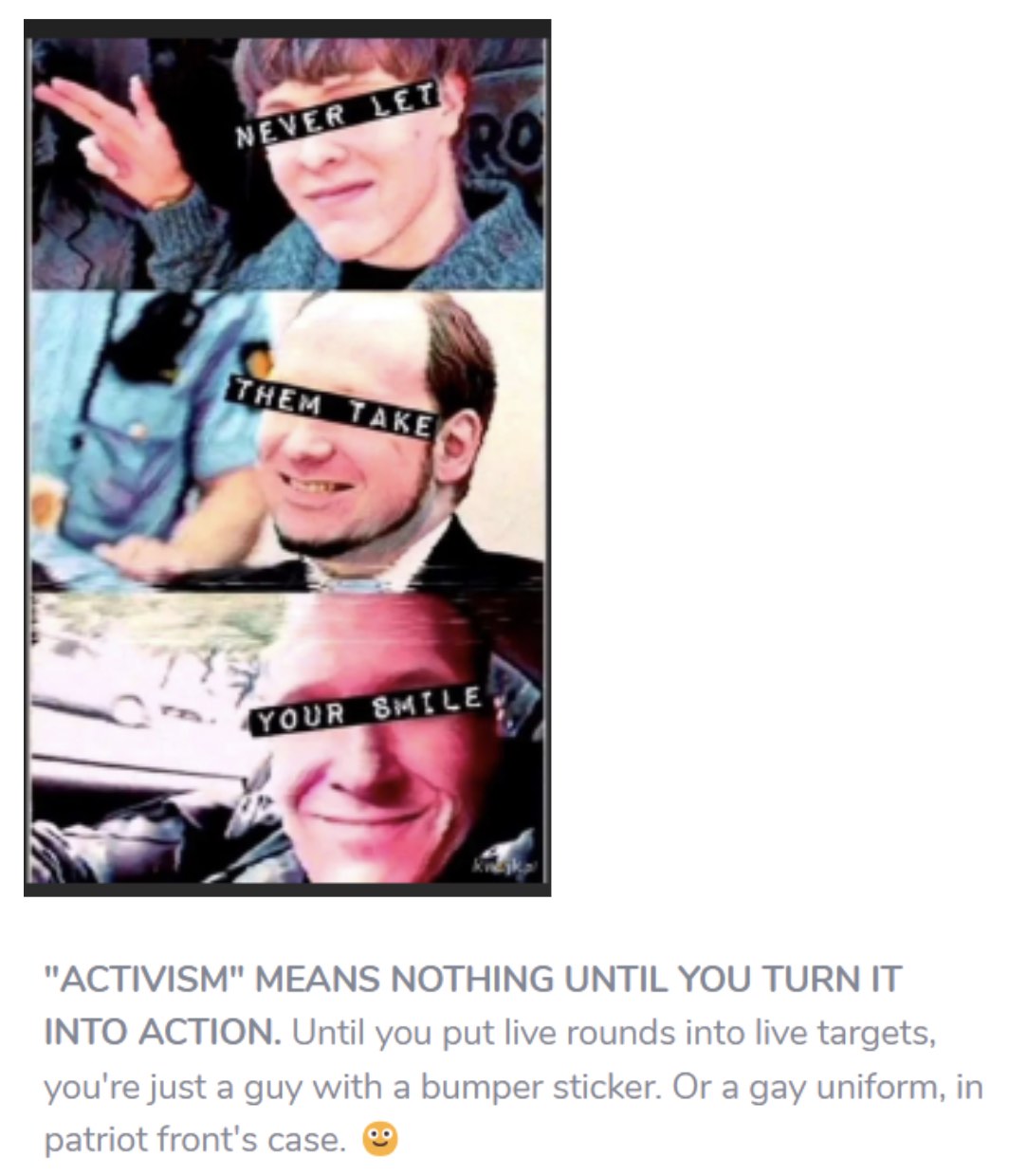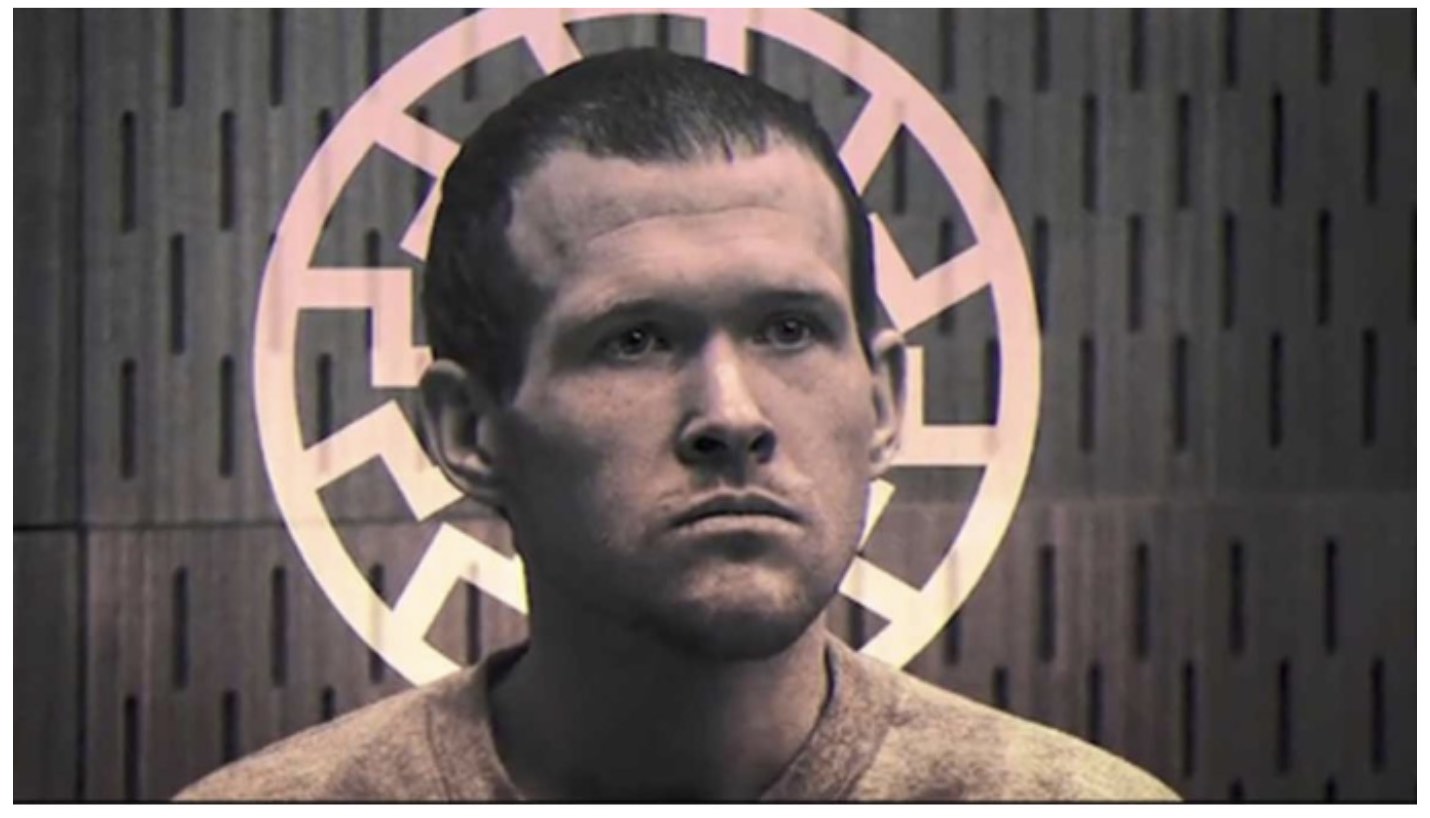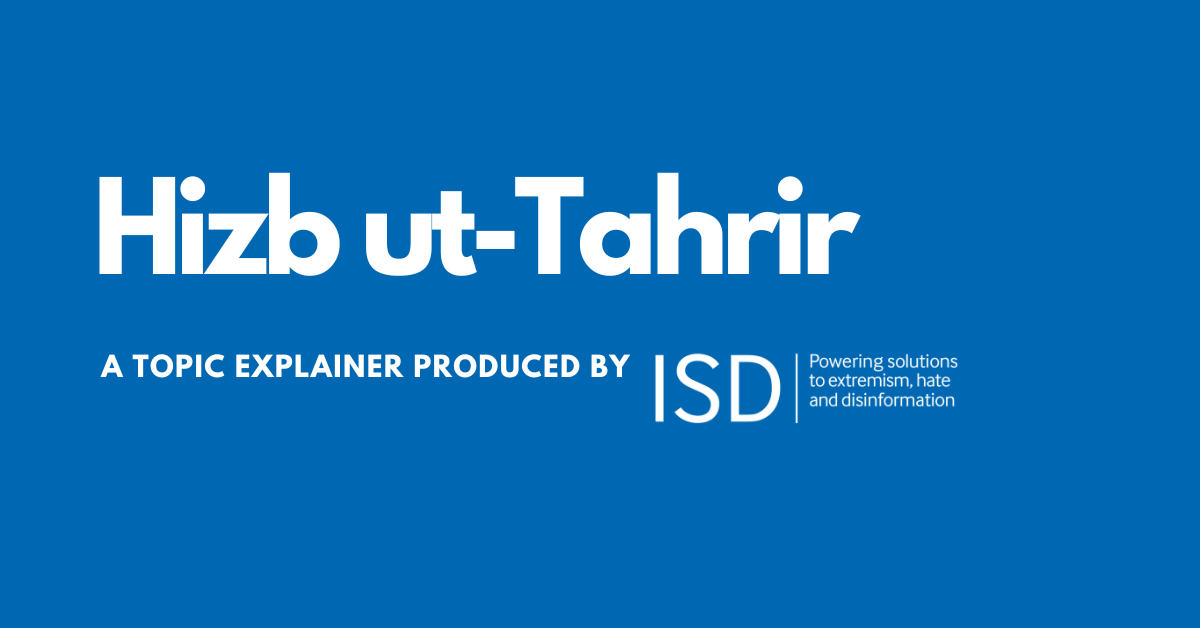‘Saints Culture’
By: Zoe Manzi
Content warning: Graphic descriptions of violence.
‘Saints Culture’ is an extremist trend prevalent amongst the white supremacist movement whereby individuals who have committed extreme acts of hate-motivated violence are revered as saints. In recent years, this phenomenon has been revitalised in certain online spaces gaining a renewed significance. However, the glorification and deification of individuals who have advocated for or committed acts of extreme violence and terrorism in the name of white supremacy has a legacy dating back 150 years. This legacy has roots in historical events such as the US Civil War, the Civil Rights Movement and the contemporary resurgence of extreme-right ideologies. Alongside these pivotal moments, ideological texts such as the fiction novel ‘The Turner Diaries’ (written by a neo-Nazi) have played a crucial role in framing ‘saint’ and ‘martyrdom’ narratives, distorting the traditional religious understanding of the words to sanctify and elevate those who carry out hate-fuelled attacks and anti-government violence. The advent of the internet and social media platforms has exponentially amplified this phenomenon as white supremacist communities online disseminate manifestos, memes and livestream videos linked to attacks and use religious terms to venerate terrorists on relevant anniversaries, with the intention to inspire like-minded individuals. This pernicious trend is pervasive and dangerous, reframing acts of extreme violence as macabre acts of devotion and fetishising perpetrators as iconic figures of worship, which may encourage copycat attacks.
Background
The most popular ‘saints’ are so-called lone actors, who are the main protagonists of the leaderless resistance movement championed by Louis Beam, the former militia leader of the Texas Knights of the Ku Klux Klan and ambassador for Aryan Nations. Beam’s 1983 essay, ‘Leaderless Resistance’, served as a comprehensive response to the failures of traditional hierarchical groups like the Ku Klux Klan in the United States, and advocated for more lone actor attacks. Whilst Beam formalised this notion, the reverence of saint-like figures, particularly lone actors, is a longer-lasting trend and extends beyond his influence.
The adoption of a leaderless resistance philosophy allowed some extremists to go without a physical headquarters, a membership list or a designated meeting place. This fostered a shift to online mobilisation and the formation of semi-independent cells comprising no more than six individuals, as outlined and suggested in Beam’s essay. This strategic evolution aimed to mitigate the risk of infiltration by federal agents and shield organisation leaders from prosecution.
Beam, William Luther Pierce and James Mason— key proponents of this lone-actor concept—, are the authors of the most lauded pieces of literature in the white supremacist world. Their respective texts— ‘Leaderless Resistance’ (1983), ‘The Turner Diaries’(1978), and Mason’s ‘SIEGE ’ (1992)— , wield significant influence and serve as foundational documents, functioning as both Bible and blueprint within white supremacist communities. These texts glorify lone-actor terrorism, depicting mass attacks as iconic scenes of martyrdom that reinforce the singular aim of engaging in offline mass violence, presenting death as the ultimate sacrifice and symbol of resistance. This belief system continues to animate lone-actor ‘saint’ narratives which are evolving and flourishing on the transnational front. A deification dynamic has refracted back on the community in turn with so-called elder statesman (status in white supremacy movement in relation to longevity and impact of book) James Mason bestowed with saint-like status within the movement himself, with members of the banned Atomwaffen Division making pilgrimage to pay homage and seek advice.

Figure 1: A Terrorgram Channel with Dylann Roof as profile picture and a comment which references James Mason’s SIEGE.

Figure 2: Quotes from lone-actor terrorists: the El Paso shooter, Patrick Crusius, who cited the Christchurch shooter, Brenton Tarrant, as an inspiration in his manifesto; and Norwegian Mosque shooter, Philip Manshaus, who claimed that Adolf Hitler, Norwegian mass killer Anders Breivik (Oslo and Utoya) and Brenton Tarrant were role models.

Figure 4: A post from an Italian Telegram Channel discussing the user’s ‘admiration’ for Dylann Roof, an indication of the transnational reach of this culture of glorification.
Key Actors
Key proponents of saints culture are the accelerationists, a white supremacist neo-Nazi subculture who believe in expediting a violent insurgency to provoke political and societal collapse and establish a white ethnostate.
Trends and Tactics
Accelerationist communities organise on Telegram in a loose network of channels often self-identified as ‘Terrorgram,’ where they publish monthly calendars designating days to specific white supremacist terrorists. Symbolic icons on the calendar represent the nature of commemoration. Cakes represent birthdays; death runes mark those deceased by their own hand, law enforcement or capital punishment; and locks indicate capture and incarceration. Days on which attacks have been committed are denoted by bombs or specific weapons indicating the mode of attack. These calendars are accompanied by a list enumerating these ‘saints’ with the traditional white power sign off ‘Hail Victory’ (the English translation of the infamous ‘Sieg Heil’ Nazi salutation) converted to ‘Hail the Saints’ and emblazoned with swastikas.

Figure 5: January 2024 Saints Calendar with symbols denoting genre of commemoration and accompanying list of ‘Saints’ shared by a Telegram Channel in the ‘Terrorgram’ network.
In the realm of white power ideologies, shifting demographics in society are perceived as a threat to the cultural dominance deemed so crucial by white supremacists. As well as ‘saints’ calendars, this perception takes concrete form through other types of user-generated content, such as the crafting of ‘saints’ cards – symbolic representations devoted to canonised figures within the movement. These cards, created in the style of trading cards, catalogue the statistics of each terrorist, including details of their number of victims, motivation, and those whom they have inspired – their ‘disciples’. This coopting of religious terminology, which extends to describing seminal pieces of literature as ‘sacred’ texts, serves as a deliberate tactic to cloak the habitual veneration of white supremacist terrorists with a veneer of respectability and endorsement. In addition to information about perpetrators and attacks, these cards often feature iconographic symbols which reinforce the actions or beliefs of those considered saintly in advancing the goals of white supremacy. As both visual and informational tools, these cards play an essential role in cultivating shared narratives and fostering a sense of unity and collective identity among followers.
Examples of Most Revered ‘Saints’
At the pinnacle of ‘saints culture’ narratives, are a revered trio of high-profile individuals who carried out some of the most egregious recent acts of white supremacist terrorism: Timothy McVeigh, Dylann Roof, and Brenton Tarrant. Sanctified within extremist circles due to their extreme acts of violence, high number of fatalities, and apparent willingness to sacrifice themselves for their cause, the actions of these patriotic ‘martyrs’ have left an indelible mark on the white supremacist movement.
Dylann Roof
Roof’s 2015 attack on the Emanuel African Methodist Episcopal church in Charleston, South Carolina, was a chilling display of racial hatred. His manifesto, discovered post-attack, was a diatribe of white supremacist rhetoric revealing a mind twisted by online radicalisation. Roof’s descent into extremism was catalysed by misleading narratives on race, as his internet searches led him to white supremacist sites which stoked his fears and prejudices.
Timothy McVeigh
A highly decorated Gulf-war veteran, McVeigh’s antigovernmental fury, which culminated in the United States’ most deadly domestic terrorist attack, the Oklahoma City bombing in 1995, was partly inspired by ‘The Turner Diaries’ which describes a white supremacist revolution.
Brenton Tarrant
In 2019, Christchurch, New Zealand shooter Tarrant’s manifesto, ‘The Great Replacement’ echoed the eponymous conspiracy theory, spreading a xenophobic narrative that white populations are being systematically replaced by non-European immigrants.

Figure 8: A Renaissance-style image depicting the canonisation of Brenton Tarrant (often referred to as ‘St Brenton of Tarrant’ in Terrorgram channels) by Dylann Roof and Adolf Hitler; Figure 9: Brenton Tarrant in court with the far-right symbol of the Sonnenrad as his halo.

Figure 10: A t-shirt denoting domestic terrorist, Timothy McVeigh, as a saint replete with halo. Figure 11: A post from an Accelerationist channel associated with the Terrorgram network in which ‘Timothy McVeigh is our saint’ is referenced.
Risks
The legacy and impact of the sanctification of these terrorists is a disturbing one because their actions have clearly inspired others to follow suit. Tarrant, for example, referenced past attackers Dylann Roof and Anders Breivik as aspirational, demonstrating a lineage of influence among white supremacist attackers. As well as the spate of attacks in 2019 that followed and referenced Tarrant’s spree, the 2022 Buffalo shooter deliberately emulated Tarrant’s methods and messaging, highlighting the dangerous risk of contagion and potential for copycat attacks. This cycle of violence can only be reinforced by the veneration of these individuals as ‘saints’ within online white power communities, a perverse glorification that encourages further acts of terror. The online spaces that celebrate these figures not only memorialise their actions but also serve as a rallying cry for future violence, creating a dangerous feedback loop of inspiration and radicalisation. White supremacist extremists worship at the altar of Terrorgram channels which function as a vehicle for expressing their mutual devotion to ‘sainted’ terrorists. The beatification of these terrorists into the annals of white supremacist history serve as a dangerous vector for recruitment, indoctrination and action.

Figure 12: An image of three of the most high-profile lone actor white supremacist killers with a comment underneath underscoring the necessity for violent extremism to achieve goals of the movement.
Further Reading
A Safe Space to Hate: White Supremacist Mobilisation on Telegram – ISD (isdglobal.org)
_________________________________________________________________________________
This Explainer was uploaded on 29 January 2024.







